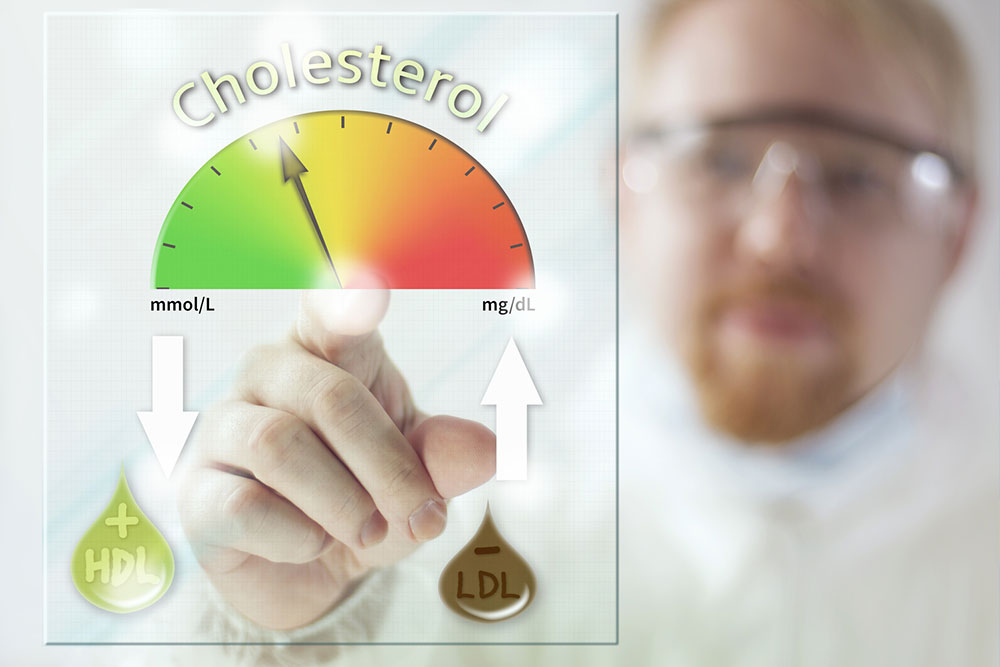All You Need to Know about High Cholesterol Levels
Cholesterol is a type of fat molecule which is present in your blood. It is an essential component that helps to maintain and shape cell structures. It is vital to have a certain level of cholesterol in your blood, but high levels of cholesterol can be harmful to your health.
High levels of cholesterol according to the cholesterol chart could mean that there are deposits of fatty substances in your blood. These fatty substances occur due to high cholesterol levels and make it difficult for your blood to flow through your arteries. It can lead to a heart attack or stroke.

A cholesterol levels chart typically monitors your total cholesterol, LDL cholesterol, HDL cholesterol, and triglycerides. Triglycerides are a type of fat found in your blood.
Types of cholesterol
There are two types of cholesterols in your blood, namely high-density lipoprotein (HDL) or good cholesterol and low-density lipoprotein (LDL) or bad cholesterol. HDL helps remove the excess cholesterol while LDL is the cholesterol that accumulates in your arteries.
Cholesterol level charts for adults and children
Cholesterol levels can be categorized as good, borderline, low, and high. The cholesterol level charts are different for children and adults. The total cholesterol, LDL cholesterol, HDL cholesterol, and triglyceride levels are measured and then categorized as good, low, high, bad or borderline.
- Cholesterol levels for children
Good cholesterol corresponds to total cholesterol of 170 or less, HDL cholesterol of 45 or higher, LDL cholesterol of 110 or less, triglycerides of 75 for age group 0-9 years and less than 90 for the age group of 10 to 19.
Borderline cholesterol suggests total cholesterol of 170 to 199, HDL cholesterol of 40 to 45, LDL cholesterol of 110 to 129, triglycerides of 75-99 for age group 0-9 years and 90 to 129 for the age group of 10 to 19.
High cholesterol implies total cholesterol of 200 or higher, LDL cholesterol of more than 130, triglycerides of 100 or more for age group 0-9 years and 130 or more for the age group of 10 to 19.
Low cholesterol corresponds to HDL cholesterol being less than 40. - Cholesterol levels for adults
Good cholesterol corresponds to total cholesterol of 200 or less, HDL cholesterol of 40 or higher, LDL cholesterol of less than 100, triglycerides less than 149.
Borderline cholesterol corresponds to total cholesterol ranging from 200 to 239, LDL cholesterol of 130-159, and triglycerides of 150 to 199.
High cholesterol corresponds to total cholesterol of 240 and higher, LDL cholesterol of 160 or more, and triglycerides of 200 or more.
HDL cholesterol less than 40 also implies low cholesterol among adults.
Complications of high cholesterol as per the cholesterol level chart
High cholesterol levels, as per the charts mentioned above, is not a good sign. High levels of cholesterol can lead to atherosclerosis. It is a condition in which cholesterol and fatty deposits accumulate on your artery walls. When this happens, the blood supply to your heart through the arteries is affected, and this leads to pain in your chest. This condition is known as angina.
When fatty deposits start accumulating due to high cholesterol levels in the blood, one faces the risk of a heart attack. The deposits, known as plaques, can cause blood clots, thus disrupting the blood supply to your heart. When the blood supply to the heart stops, one can end up having a heart attack.
People with high cholesterol levels also face a higher risk of a stroke. When plaques start accumulating in the arteries, blood flow to not just the heart but also to the brain is blocked.
What causes cholesterol levels to shoot up higher than the standard mentioned on the cholesterol level charts?
High cholesterol as per the cholesterol level chart can be attributed to poor and sedentary lifestyle. Having a poor diet and being inactive puts you at risk of high cholesterol levels.
High cholesterol can also be a risk if you regularly consume saturated fats and trans fats found in animal fats and commercially prepared cookies respectively. Red meat is another food that can lead to high levels of cholesterol. Full-fat dairy products are also high on cholesterol.
People who are obese or overweight, that is, if their body mass index is 30 or more, face the risk of high cholesterol. Lack of exercise can increase one’s chances of developing high levels of cholesterol. Smoking also puts people at risk of increased levels of cholesterol in the blood. Diabetes patients should also keep a check on their cholesterol levels.
Tips to deal with high cholesterol levels as per the cholesterol level chart
To deal with high levels of cholesterol, you can take statins for removing cholesterol from your blood, and for reabsorption of accumulated cholesterol. One can also take bile acid resins such as cholestyramine and colesevelam to reduce cholesterol levels. Doctors may recommend fibrates and omega-3 fatty acid supplements as well.
One must bring about changes in their diet and lifestyle to maintain healthy cholesterol levels. Avoid the consumption of saturated fats and trans fats that are unhealthy and go for monounsaturated fats and healthy fats instead.

